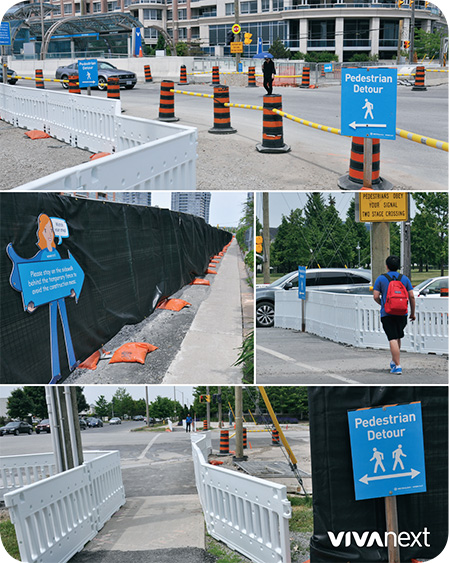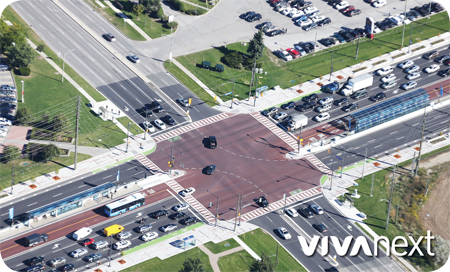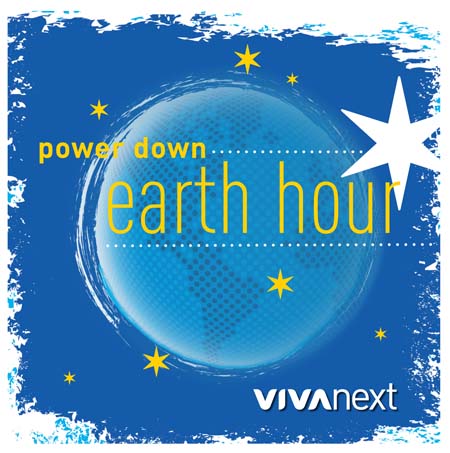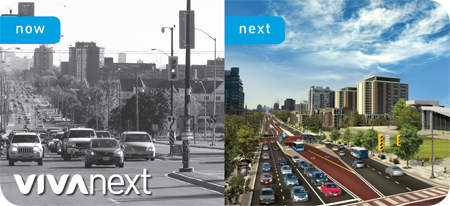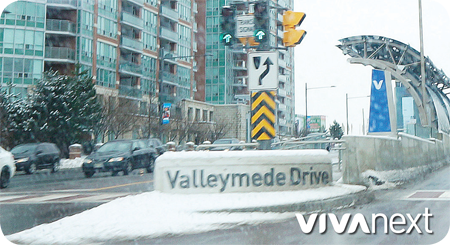It seems anywhere and everywhere you go these days there’s a sign of some type that catches your eye. Whether it’s an advertising, traffic or directional sign, it’s meant to grab your attention. The purpose of all the signs out there is for people to watch and read them every day as they pass by, so that you know what is going on in their neighbourhoods.
With the large number of signs out there you may become desensitized, but the signs in construction zones are there for your safety. A busy season of road work is underway on several vivaNext projects, so we hope drivers and pedestrians pay close attention to construction markers and signs as they may change daily depending on the work.
For pedestrians, crossing between intersections is tempting. But during construction, it’s especially important to cross at crosswalks – lane closures can change frequently and although construction areas are well marked, drivers may not see a pedestrian crossing unexpectedly. When large equipment and trucks are working in an area, it is especially confusing if workers are not expecting people in their work zones, so please make sure you are in a safe area, which will be well marked with a sign, of course.
We understand the frustration of being a driver stuck in traffic too, and we’re using large digital signs on the street, to let you know ahead of time about lane closures and detours, as well as providing current travel times. We hope these signs help you plan your route accordingly and help you manage your travel times. To receive regular updates about our construction projects, subscribe to our email notices. And for on-the-go traffic alerts about our construction, follow us on Twitter.
Whether you’re biking, walking or driving this summer, we hope you’re enjoying the weather, staying alert and following the signs that keep you safe.

